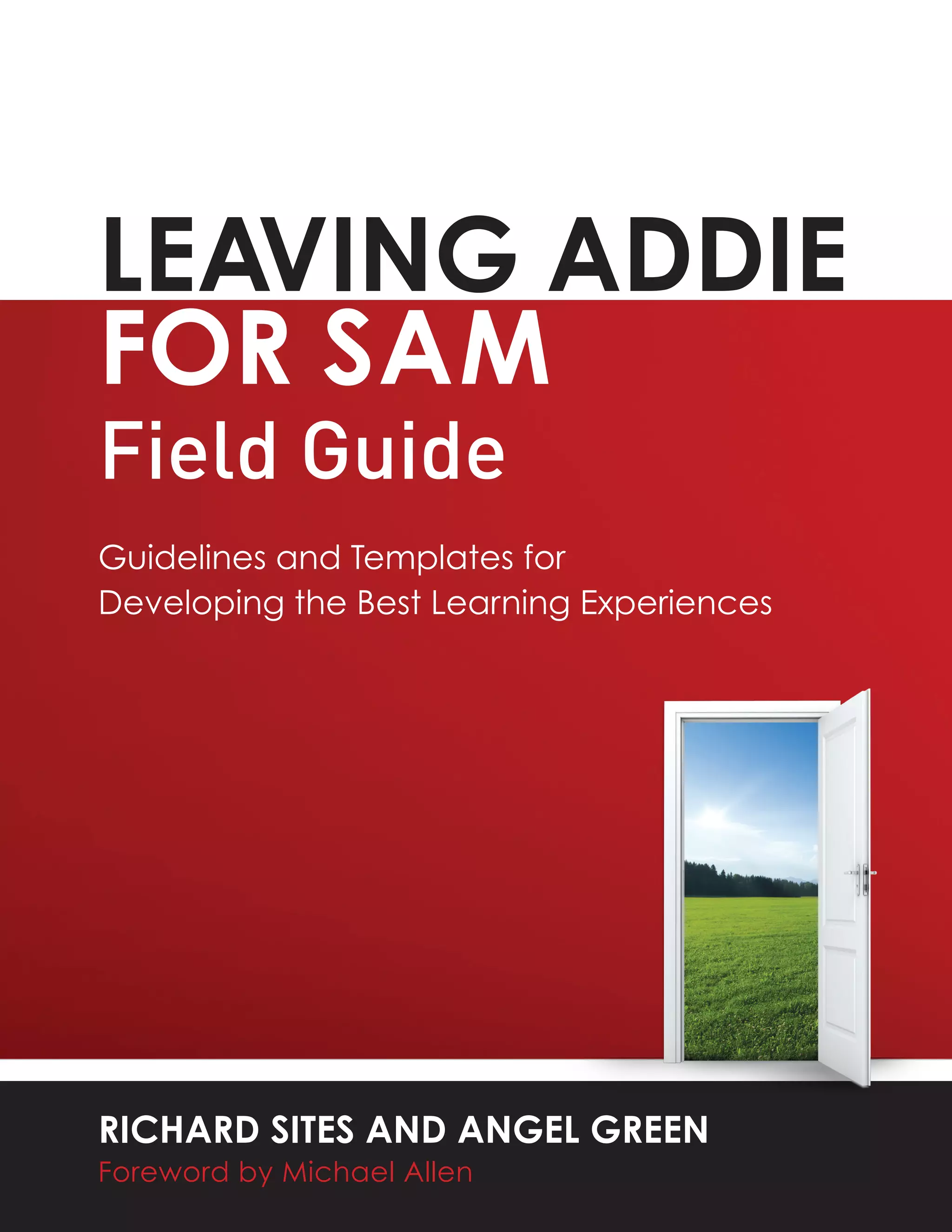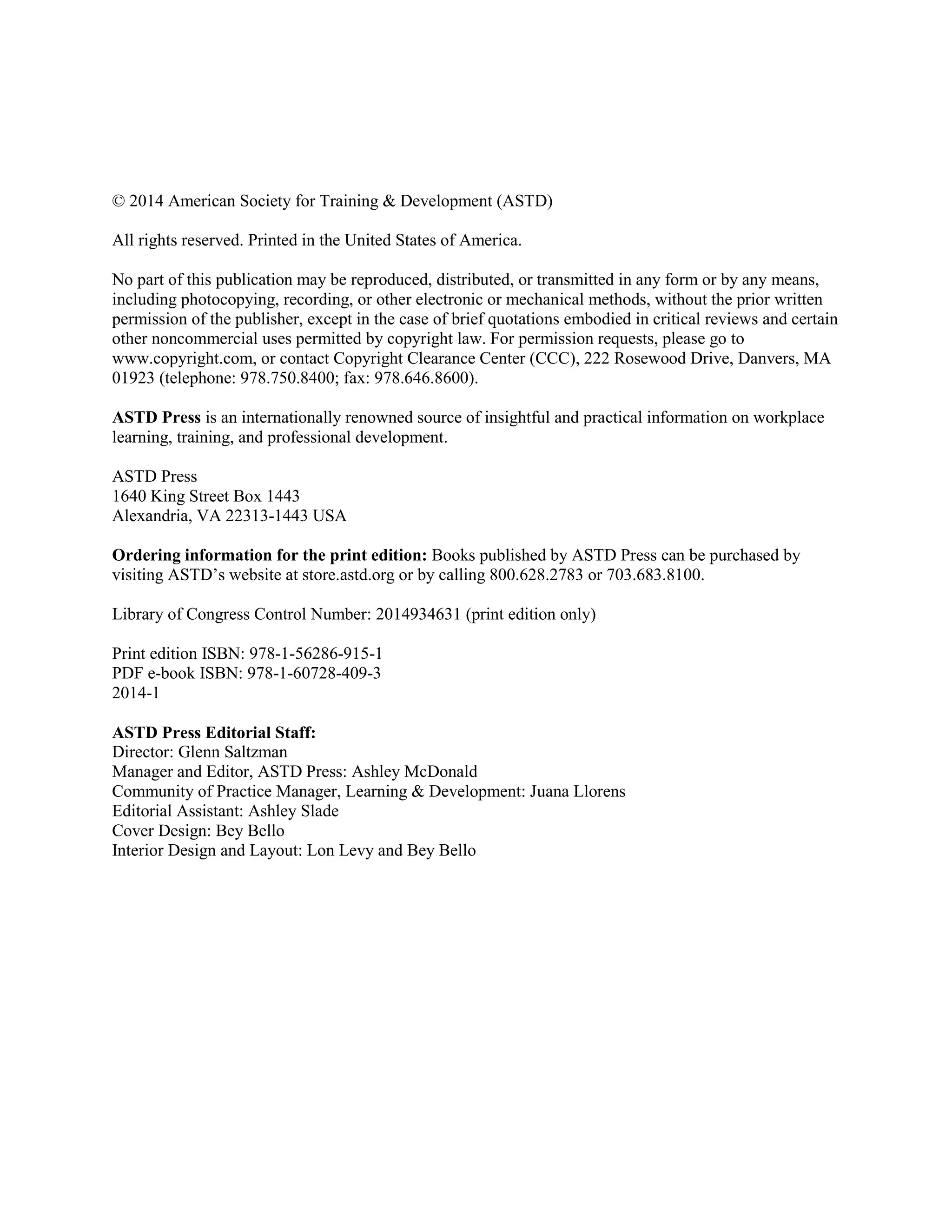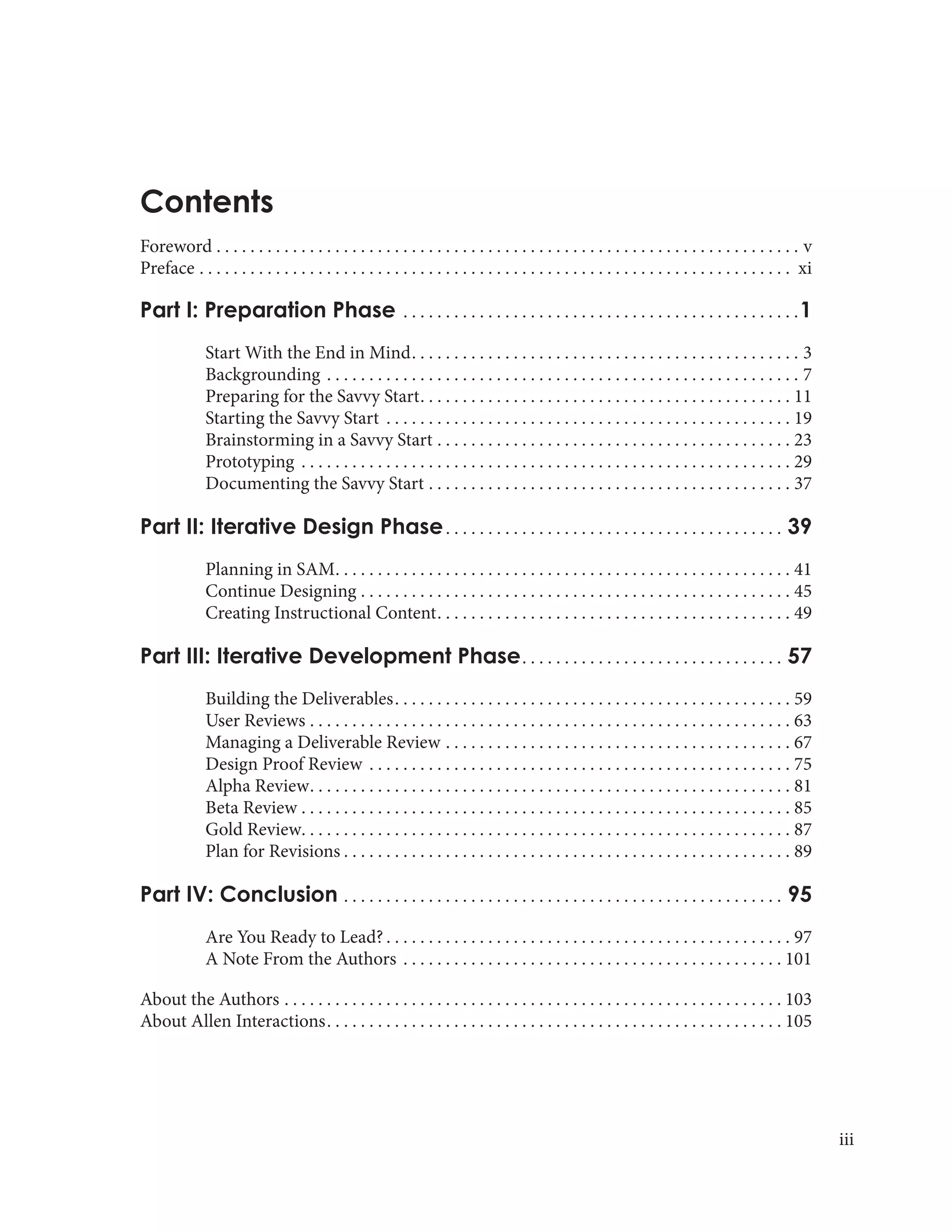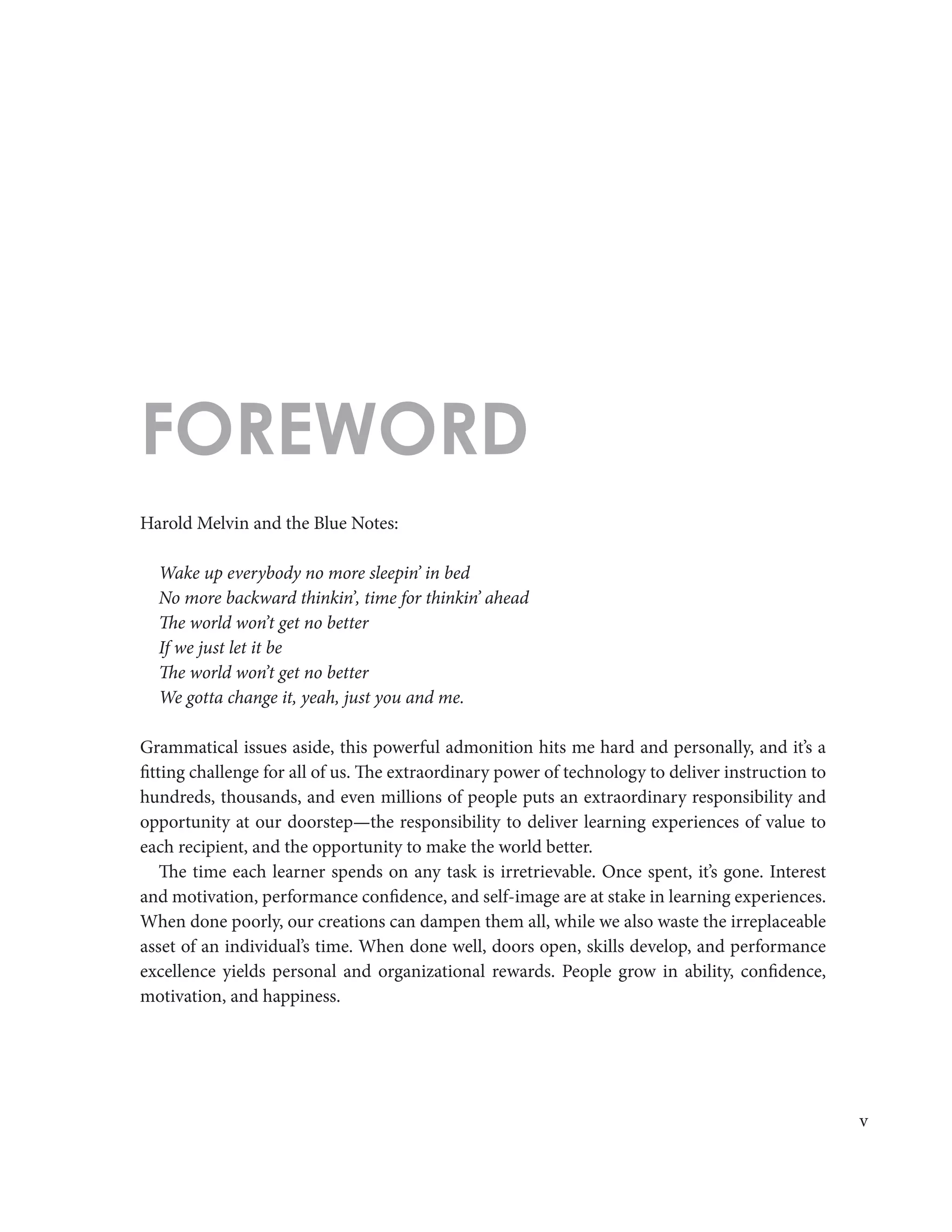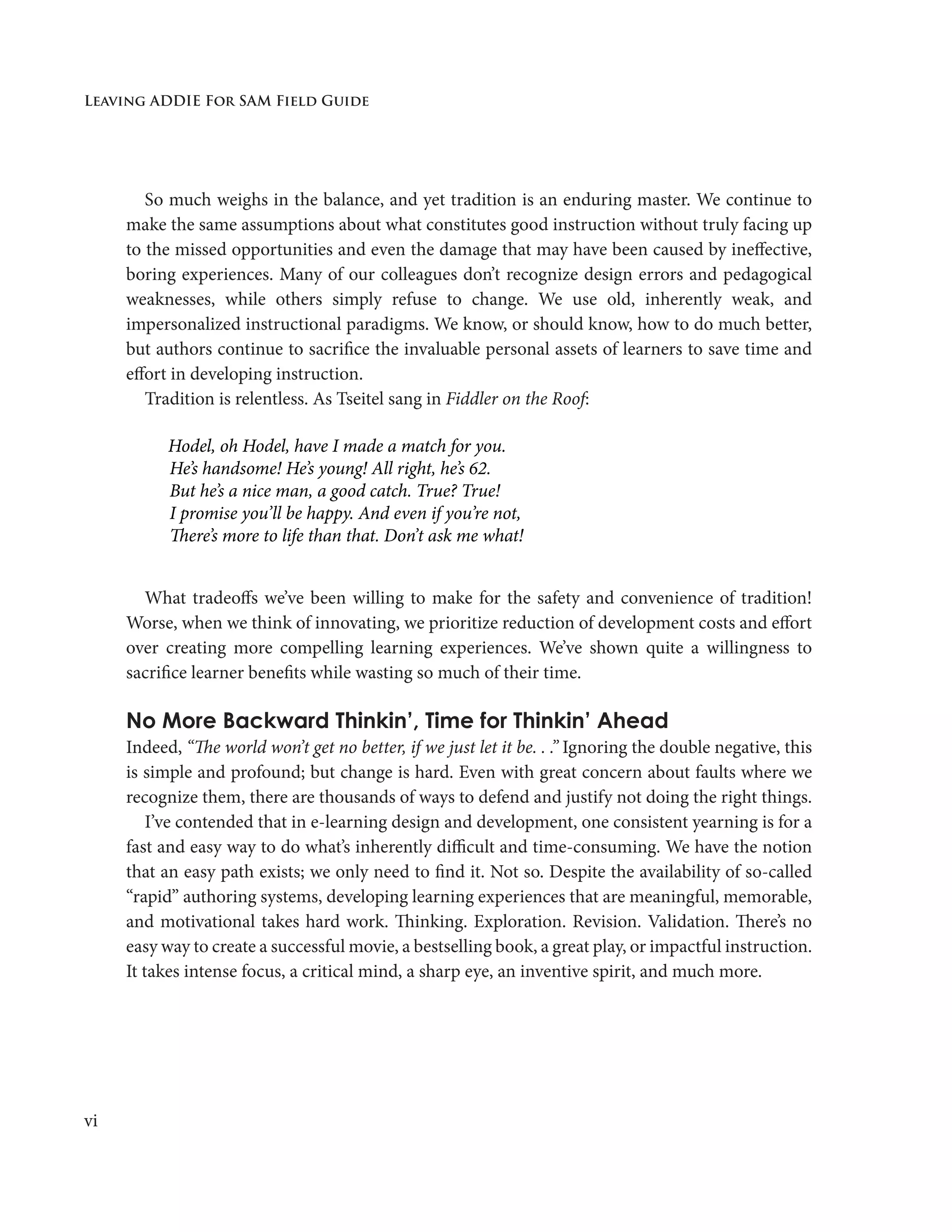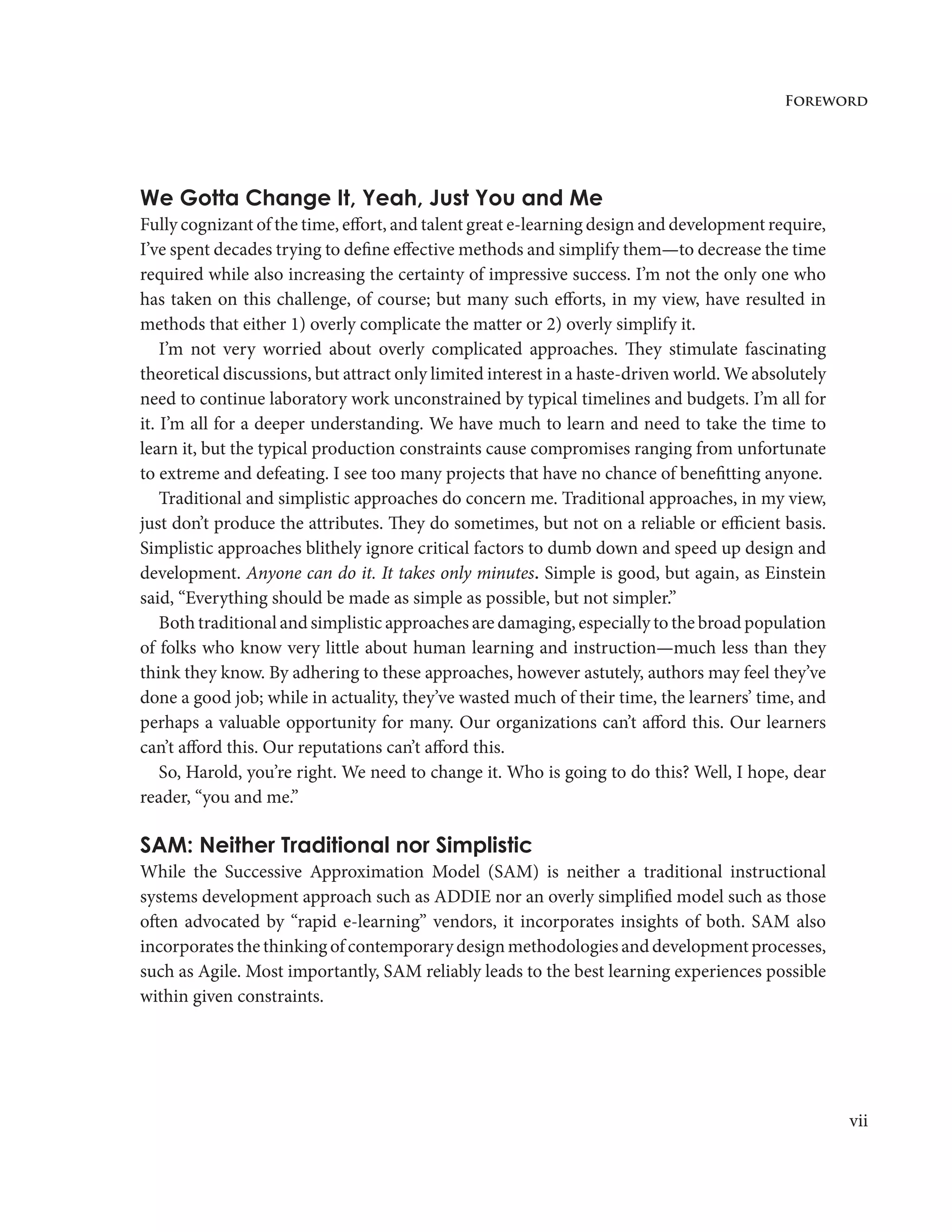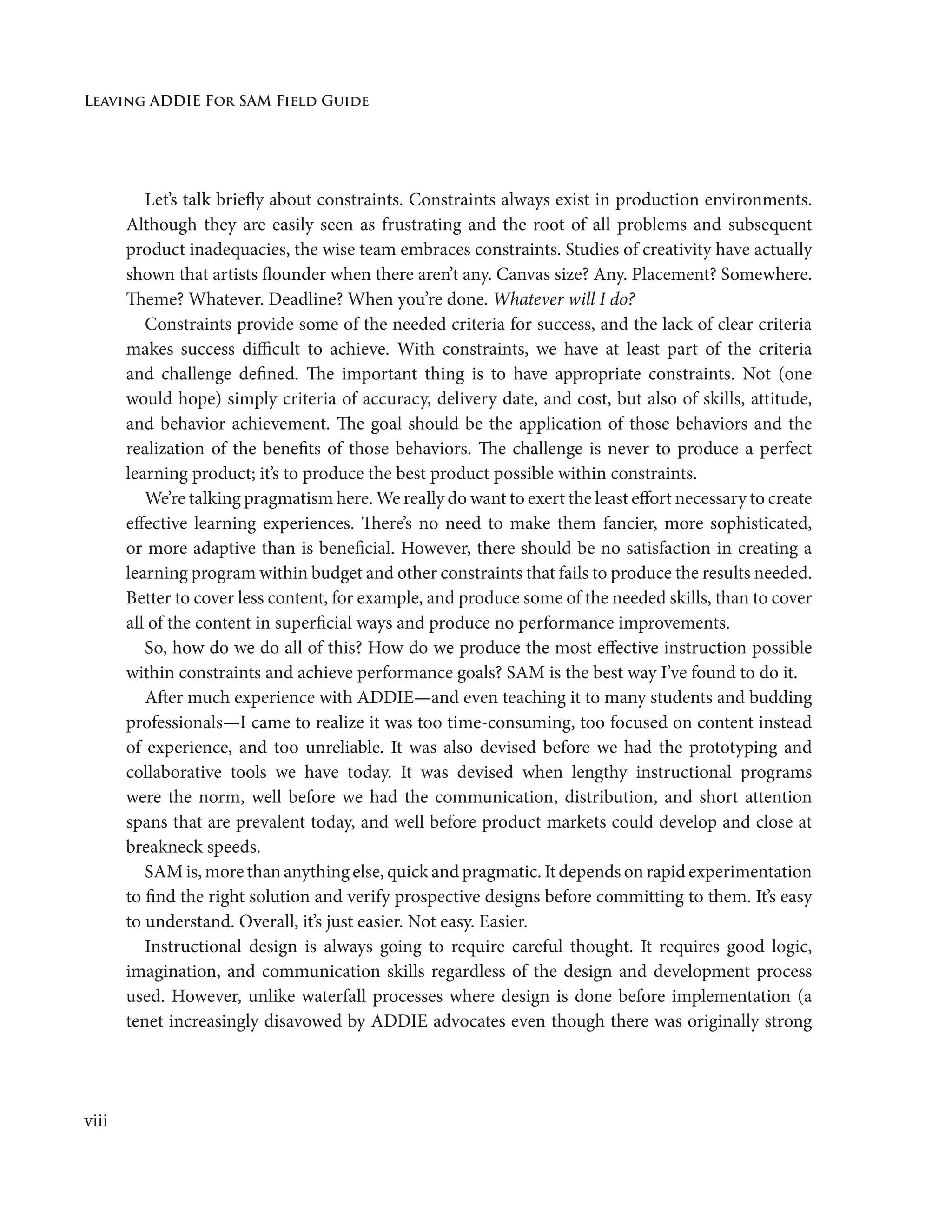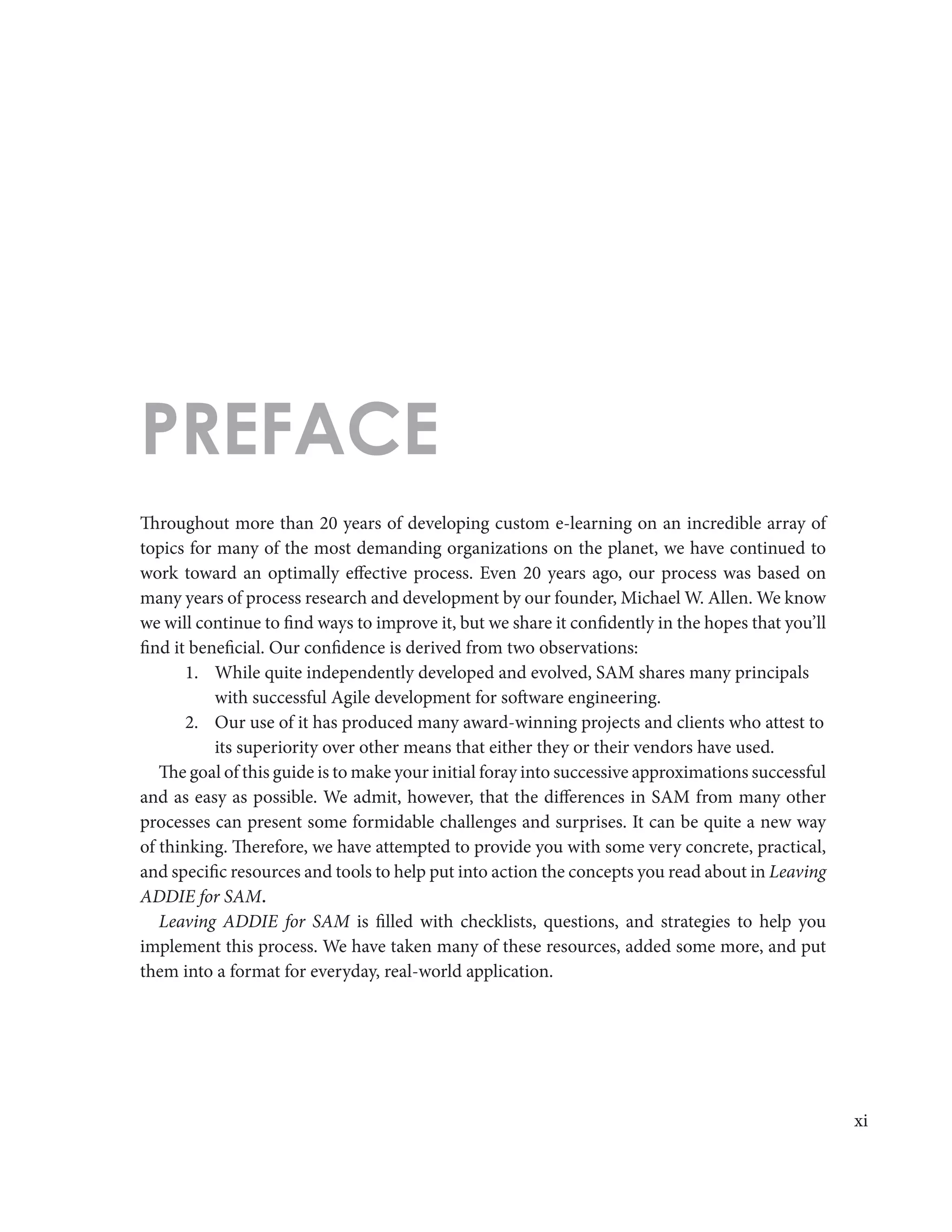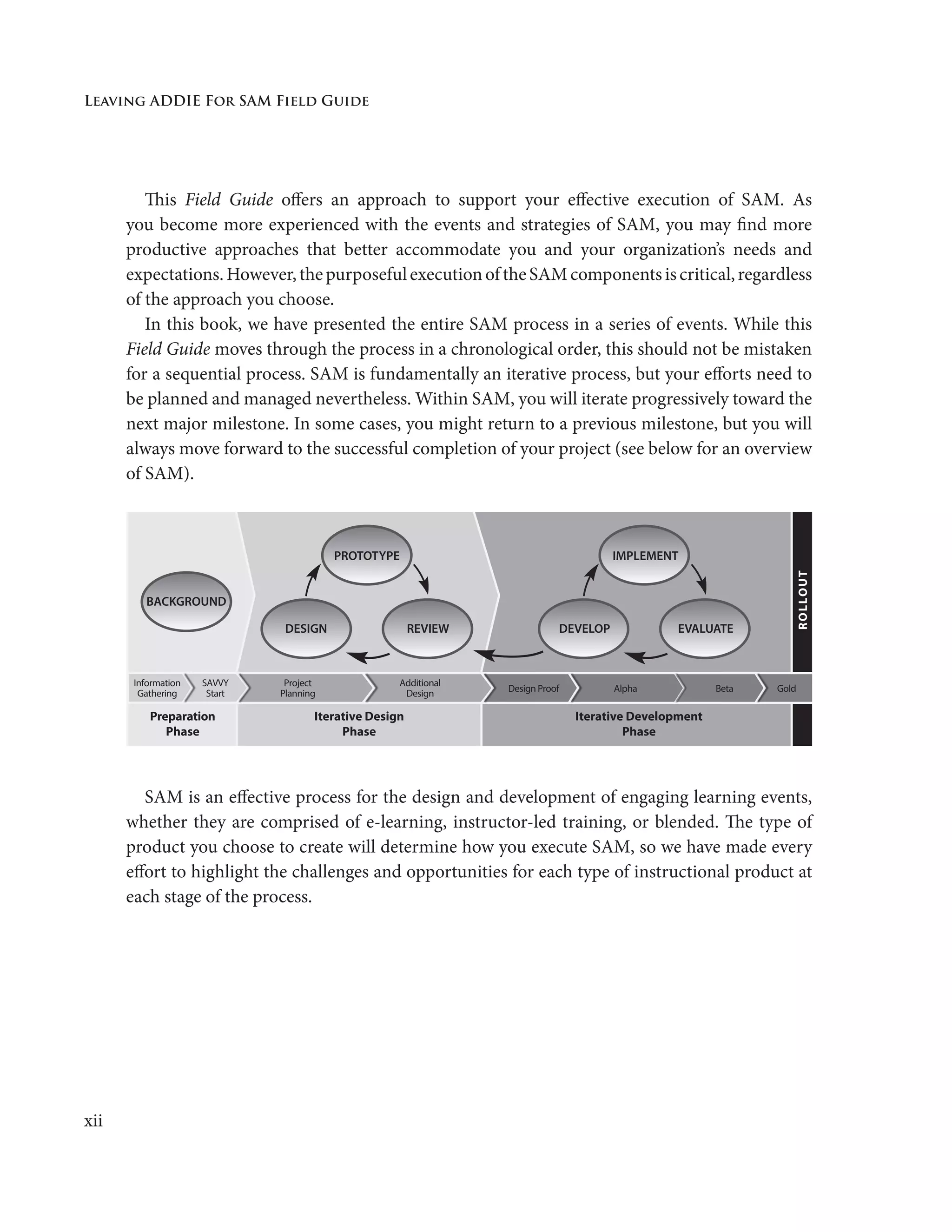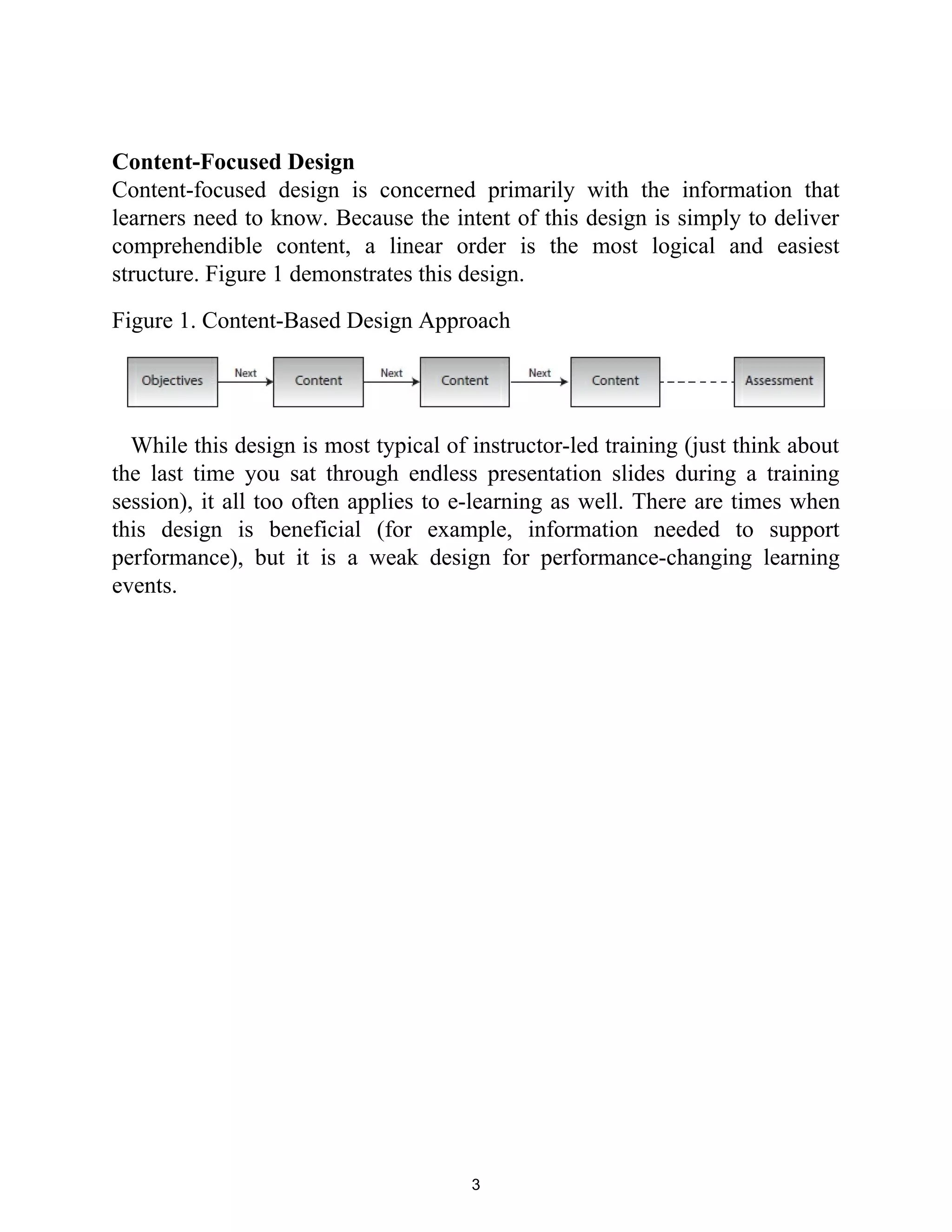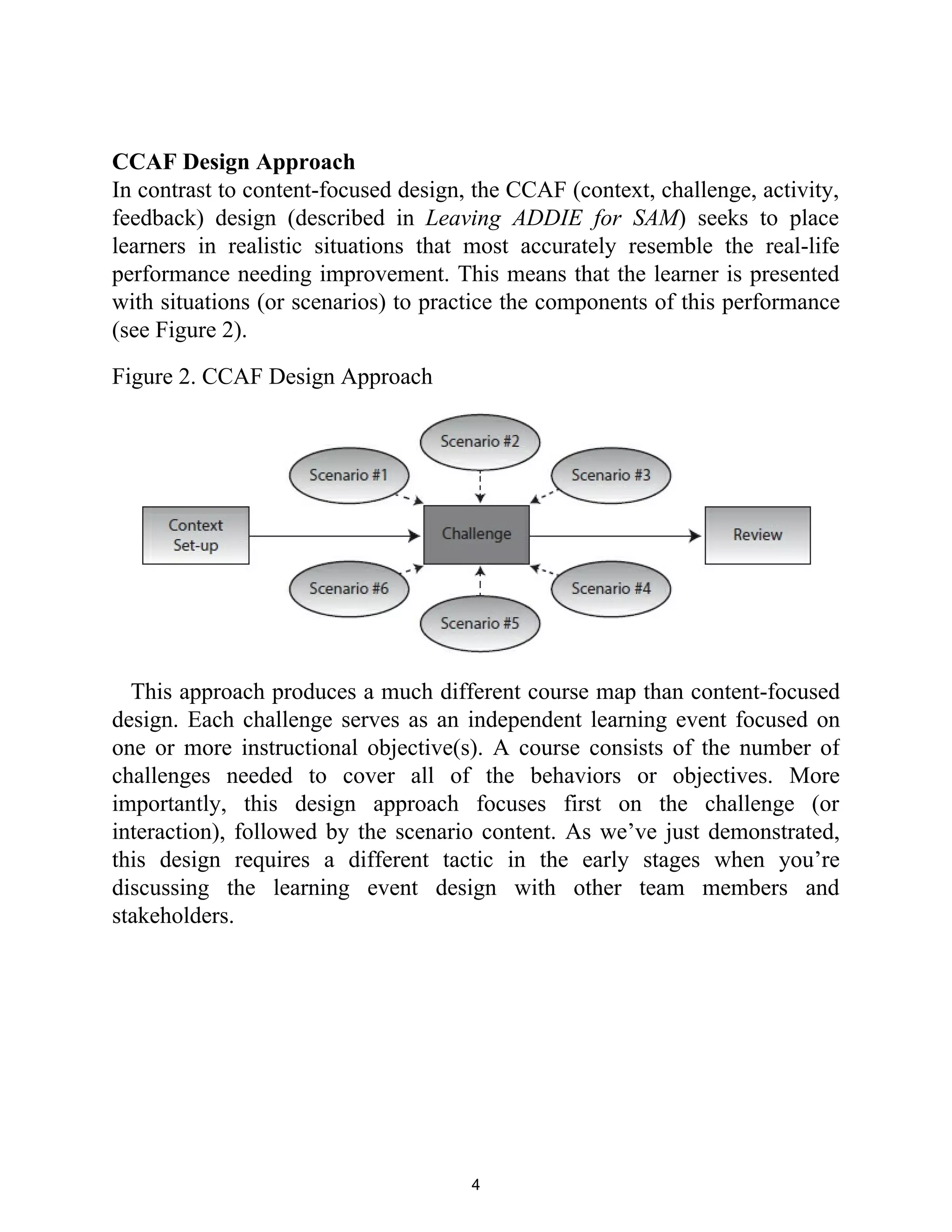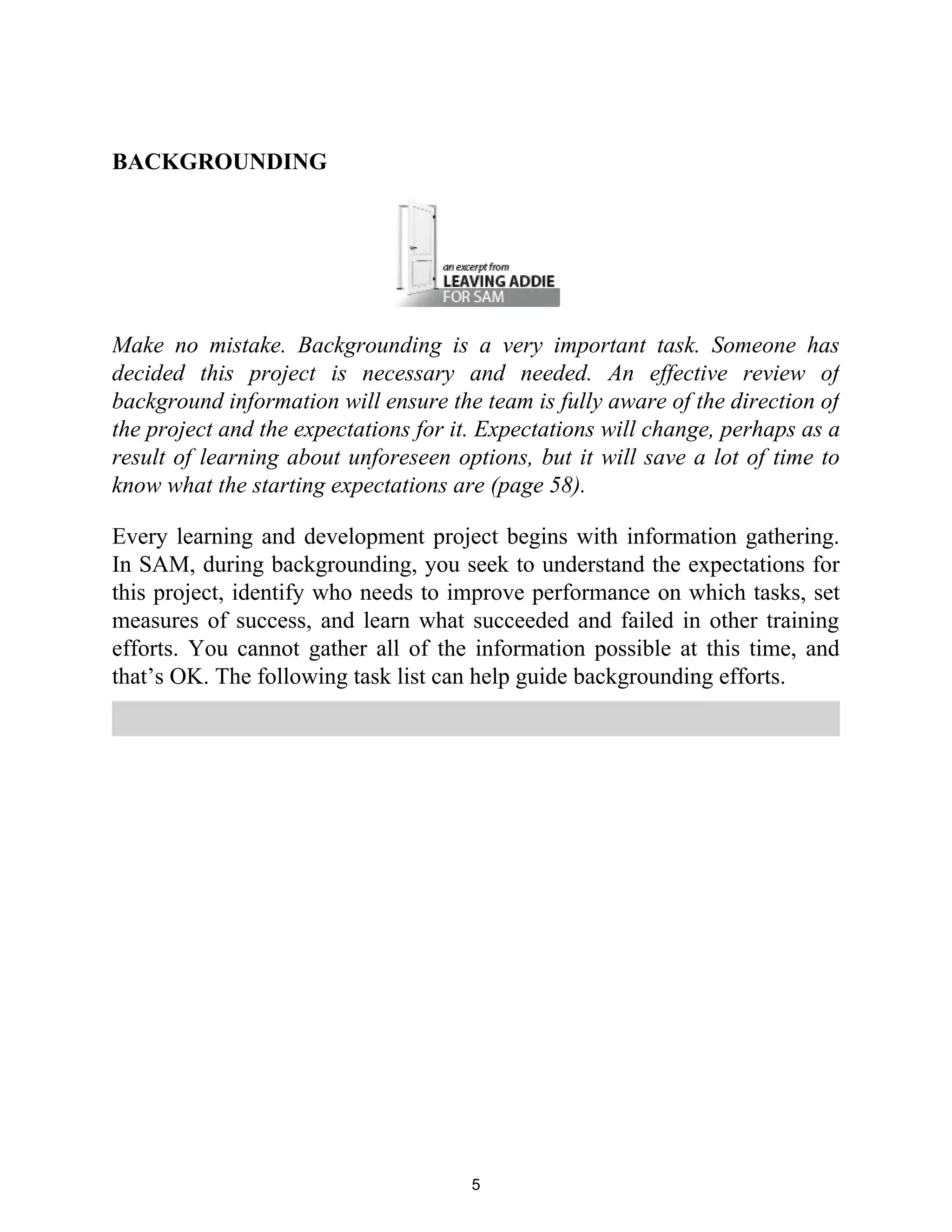The document 'Leaving Addie for Sam' serves as a field guide for developing effective learning experiences, detailing guidelines and templates from preparation to iterative design and development phases. It emphasizes the importance of planning, prototyping, and reviewing instructional content to enhance learner engagement and outcomes. The authors challenge educators to utilize technology responsibly to create valuable learning experiences that contribute positively to individual and organizational growth.
